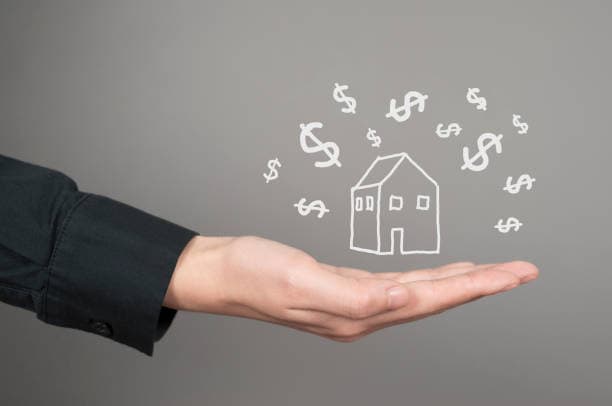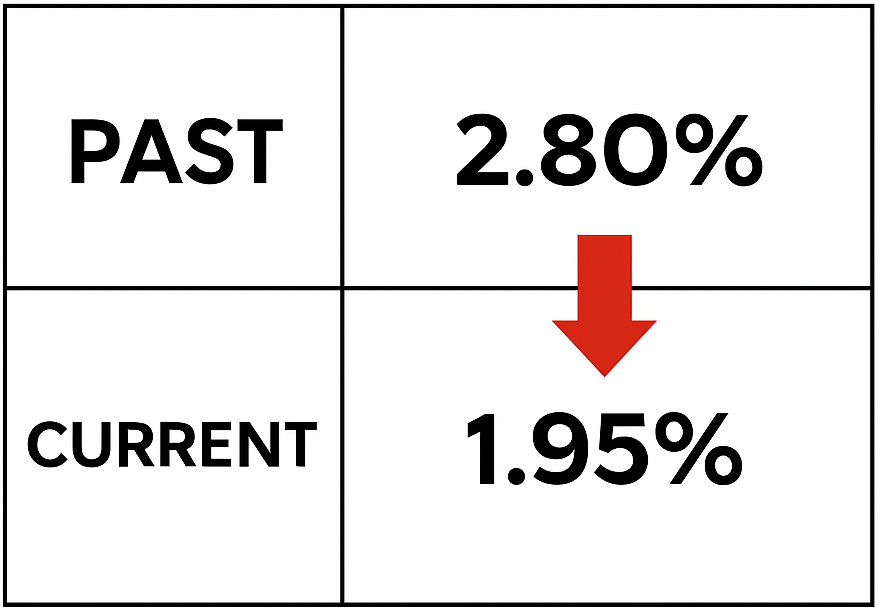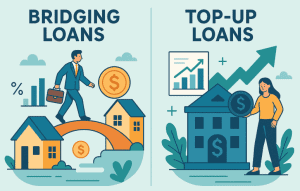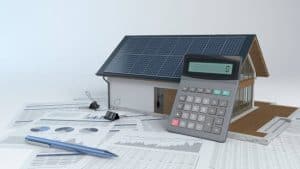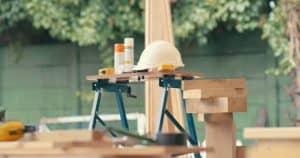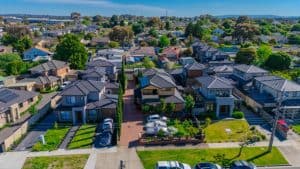Thinking of using your CPF to pay for your home loan? You’re not alone — it’s one of the most common ways Singaporeans finance their property. But with CPF rules changing and interest rates shifting in 2025, it’s important to know exactly how it works.
In this guide, we’ll show you how to use your CPF for monthly home loan repayments, what to watch out for, and whether it still makes sense compared to using cash.
Need help comparing options? Start with the latest home loan rates in Singapore.
How to Use CPF to Pay Your Housing Loan in Singapore
Using your CPF to pay for your home loan is common in Singapore — but many people aren’t clear on how it actually works. From setting up monthly deductions to knowing what your CPF can (and can’t) be used for, it’s important to get it right.
Whether you’re buying an HDB flat or financing a condo with a bank loan, this section will walk you through the essentials — step by step.
What CPF Ordinary Account funds can be used for (HDB and bank loans)
Your CPF Ordinary Account (OA) can be used for more than just building retirement savings. When it comes to housing, here’s what you can use it for:
- Downpayment for HDB flats or private property (partial cash may still be required)
- Monthly loan instalments for both HDB loans and bank loans
- Stamp duty and legal fees
- Home Protection Scheme (HPS) premiums (if you’re taking an HDB loan)
Whether you’re taking an HDB housing loan or opting for a bank loan for your condo, CPF OA is allowed — but subject to withdrawal limits and property eligibility rules (e.g. lease duration, ownership type).
Not sure if your CPF is enough? Use our mortgage loan repayment calculator to estimate your monthly payments.
How to set up CPF payments via HDB, bank, or lawyer (step-by-step)
Setting up CPF deductions is actually simpler than most people think. Here’s how it works depending on where you’re buying:
🏠 For HDB flats:
- Apply through HDB’s portal when you book your flat.
- Authorise CPF usage via the CPF website after your Option to Purchase is accepted.
- CPF will work with HDB to deduct monthly instalments automatically.
🏢 For bank loans (e.g. DBS, UOB, OCBC):
- Your law firm will usually handle the initial CPF forms when you buy a private property.
- You’ll need to log in to CPF’s portal to authorise the payment.
- CPF OA deductions begin once the loan disbursement starts.
Just make sure you’ve set aside enough in your OA — and keep track of your contributions in case your income or monthly repayment changes later.
🔗 Read more in our CPF deduction setup and eligibility guide.
What happens if you pause or stop CPF deductions mid-loan
Life happens — and you might want (or need) to pause your CPF repayments at some point. Here’s what you should know:
- You can apply to stop CPF deductions anytime by logging into your CPF account and cancelling the authorisation.
- Once cancelled, you’ll need to pay the instalments in cash directly to your HDB or bank account.
- If your OA balance runs low, CPF will also auto-stop deductions until you top up.
Don’t forget — if you stop paying via CPF, you’re still responsible for the loan. Defaulting can affect your credit score or even lead to repossession.
CPF Housing Loan vs Bank Loan vs Paying with Cash
Not all home loan payments are created equal — and deciding whether to use CPF, a bank loan, or your own cash can make a big difference in the long run. Each option has its benefits and drawbacks, depending on your financial goals and how much flexibility you want.
Let’s break down when each method makes the most sense.
Pros and cons of using CPF for housing repayments
Using your CPF Ordinary Account to pay your home loan is super convenient — you don’t feel the monthly pinch, and it helps manage cash flow. But that doesn’t mean it’s always the best long-term move.
Should You Use CPF to Pay Your Home Loan? Pros and Cons Explained
Using CPF to pay your home loan frees up cash — but it comes with trade-offs. Here’s a quick comparison to help you decide what works best.
Pros and Cons of Using CPF
| Pros | Cons |
|---|---|
| Reduces monthly cash outlay | You forgo 2.5% CPF OA interest |
| Convenient auto-deductions for HDB and bank loans | You must refund CPF used (plus interest) if you sell your property |
| Frees up cash for other needs or investments | Depletes CPF savings meant for retirement |
Tip: Want to see how CPF usage affects your mortgage payments? Try our mortgage loan repayment calculator.
When bank loan repayments make more sense (lock-in, flexibility)
Bank loans give you access to lower interest rates than HDB loans in many cases, especially if you’re comparing floating vs fixed packages. That said, they often come with a lock-in period and other terms to be aware of.
You might prefer a bank loan if:
- You’re confident in refinancing later for better rates
- You want to take advantage of SORA-pegged interest rates
- You prefer customisation — like choosing between fixed or floating packages
For more details, check out our DBS home loan guide — or compare it against HDB financing in our HDB loan vs bank loan breakdown.
When it’s better to preserve CPF and pay using cash
If you’ve got the liquidity, paying your home loan in cash while preserving your CPF OA may be a smart move — especially if you want to build a stronger retirement fund.
Consider using cash when:
- You want to keep earning 2.5% interest on your CPF OA
- You’re planning to invest your CPF via CPFIS or other instruments
- You’re thinking long-term about your RA and CPF LIFE payouts
It’s all about trade-offs. Preserving CPF gives you retirement peace of mind, but only if your cash flow allows for it.
Is Your CPF Enough to Cover the Full Housing Loan?
It’s easy to assume your CPF will take care of your entire home loan — but that’s not always the case. Between withdrawal caps, lease rules, and fluctuating OA balances, you might hit a limit sooner than expected.
Here’s what to check before relying too heavily on CPF.
CPF withdrawal and valuation limits you must not exceed
Even if you have a healthy CPF OA balance, there are rules on how much you can use for housing:
- Valuation Limit (VL): You can use CPF up to 100% of the property’s valuation or purchase price — whichever is lower.
- Withdrawal Limit (WL): If you’re using a bank loan, CPF usage is capped at 120% of the VL. After that, all repayments must be in cash.
- Lease criteria: CPF can only be used if the lease has at least 20 years left, and usage is restricted if the lease doesn’t cover you to age 95.
If you’re buying an older resale flat or private property, this becomes especially important. Your CPF usage may be cut short unexpectedly.
🔗 Also check if you qualify for any CPF housing grants to reduce your loan size.
What to do if CPF runs out before the loan ends
If you hit your CPF limits or simply run out of OA funds mid-loan, here’s what to do:
- Switch to cash repayments — either manually or via GIRO setup with your bank or HDB.
- Top up your CPF OA — via voluntary contributions (not ideal unless part of a long-term plan).
- Consider refinancing — to reduce your monthly instalment, especially if cash flow is tight.
And don’t forget: once CPF deductions stop, they won’t restart automatically. You’ll need to re-authorise them through the CPF portal.
Real scenario: CPF shortfall due to lease decay or lower income
Let’s say you buy a 35-year-old HDB resale flat using CPF and a bank loan. At first, everything runs smoothly. But 15 years into your loan, your CPF OA balance starts running low — and the property’s remaining lease no longer qualifies for CPF usage based on age-95 rules.
Now, you’re forced to pay entirely in cash, even if your salary hasn’t grown much. This happens more often than most buyers expect — especially for older flats and dual-income households that stop working or contribute less to CPF.
Monthly CPF Instalments: How They Work and How to Optimise
Using your CPF for monthly home loan instalments is incredibly common — but most people set it and forget it. To make the most of your CPF, it’s worth understanding how the deductions work and how to stay flexible if your situation changes.
How CPF monthly deductions are authorised and processed
When you first buy a home, you’ll be asked to authorise CPF deductions for your housing loan. Here’s what happens behind the scenes:
- For HDB buyers, you submit your authorisation via HDB during the flat booking process.
- For bank loans, your law firm will guide you through the CPF forms before completion.
- Once set up, CPF OA funds are deducted monthly, based on your instalment schedule.
If there’s not enough in your OA, the deduction will fail — and you’ll need to top up manually or cover the shortfall in cash.
Planning ahead? Use a mortgage loan repayment calculator to check if your CPF balance can cover the full tenure.
How to adjust, pause or stop CPF repayments as needed
Life circumstances change — and luckily, CPF is flexible enough to let you pause or stop repayments if needed.
- To stop CPF deductions: Log in to the CPF website and revoke your authorisation under “My Housing”.
- To change monthly amounts: You’ll need to contact your loan servicer (HDB or bank) to adjust instalments, and then re-authorise via CPF.
- To resume CPF payments: You’ll need to log in and re-authorise again — it won’t resume automatically.
It’s smart to check your CPF OA balance every few months, especially if you’re on variable income or nearing your withdrawal limits.
CPF Home Protection Scheme (HPS) — how it protects you
If you’re using CPF to repay an HDB loan, you’ll likely be enrolled in the Home Protection Scheme (HPS) — a mortgage-reducing insurance that covers your loan in the event of death, terminal illness, or permanent disability.
Here’s how it works:
- Premiums are paid using CPF OA (unless you opt out)
- Coverage matches your loan amount and loan tenure
- If something happens to you, CPF will pay off your outstanding HDB loan
Note: HPS is not required for bank loans — those typically rely on mortgage insurance offered by private insurers instead. Not sure which coverage you need? Read our full guide on HPS in Singapore to understand your options.
Using CPF for Housing After Age 55 — What Changes in 2025?
Reaching age 55 is a major CPF milestone — and if you’re still paying off your home loan, it’s important to know what changes. CPF rules shift once the Retirement Account (RA) kicks in, which can affect how much you can continue using for housing.
Here’s what to expect, especially with the latest updates in 2025.
CPF OA to RA transfer and how it affects your loan payments
At age 55, a portion of your CPF Ordinary Account (OA) and Special Account (SA) is automatically transferred into your Retirement Account (RA) to set up your CPF LIFE payouts.
This means:
- You’ll likely have less in your OA available for monthly mortgage deductions.
- CPF deductions for your home loan may reduce or stop, unless you have enough OA balance left after the transfer.
- If OA runs low, you’ll need to pay the difference in cash.
It’s wise to check your OA projection before age 55 so you’re not caught off guard.
Can you still use CPF for housing after 55? Yes — but with limits
Yes, you can still use your CPF to pay for your home after 55 — but only from the funds that remain in your OA after the RA is set aside.
You cannot:
- Use money from your Retirement Account
- Skip the RA top-up just to continue OA usage for housing
If you plan to downgrade or refinance, you’ll also need to ensure your CPF usage still complies with valuation and withdrawal limits.
Find out more about what happens to your CPF savings when you reach 55 on the CPF Milestone Guide.
2025 CPF policy updates: higher contribution ceilings and RA top-ups
As of 2025, CPF has rolled out several updates that impact housing affordability for older borrowers:
- Higher monthly salary ceilings mean more CPF contributions going into your OA if you’re still working
- Enhanced Retirement Sum (ERS) increased — which also raises the amount set aside in RA at 55
- Voluntary top-ups to your RA now come with higher tax relief caps
These changes aim to strengthen retirement security, but they may reduce your available CPF OA for housing — so plan accordingly if your loan stretches into your late 50s or 60s.
Should You Use CPF or Cash to Repay Your Mortgage?
This is one of the most common questions homeowners ask — and there’s no one-size-fits-all answer. Some swear by using CPF to free up cash, while others prefer to preserve their CPF for retirement. The best approach really depends on your goals and financial situation.
Let’s break down the key trade-offs so you can decide what works best for you.
CPF OA interest vs long-term investment returns (CPFIS, ETFs)
Your CPF Ordinary Account earns 2.5% interest per year, guaranteed. That’s risk-free — which is great for peace of mind, but not necessarily exciting from a returns perspective.
If you choose to preserve your CPF and pay your mortgage in cash, you could:
- Let your CPF grow at 2.5% compounding
- Or invest your CPF via CPFIS in unit trusts, blue-chip stocks, or Singapore ETFs (like STI ETF)
However, returns from investments are not guaranteed — and poor performance could mean your CPF ends up earning less than the 2.5% base rate.
Using CPF now vs saving it for retirement — trade-offs to consider
Using CPF now gives you immediate cash flow relief. That’s helpful if:
- You’re saving aggressively for other goals
- You need liquidity for renovation, kids’ education, etc.
- You’re on a tight monthly budget
But saving CPF for retirement means:
- You’ll grow your OA steadily and have more in your RA later
- CPF LIFE payouts will be higher
- You avoid the need to refund accrued interest if you sell your home later
It really comes down to short-term convenience vs long-term security.
Real-world perspectives from Reddit
Here’s what real homeowners and experts are saying in 2025:
“Personally I feel that so long as you are able to get an investment vehicle that reaps more than 2.5% you should use CPF for housing as much as possible.”
— Reddit user hanamichisakuragi007 on r/singaporefi
“I would agree to pay off the loan with CPF first, keep the flexibility with the cash. After all, accrued interest is interest paid to yourself…”
— Reddit user whosetruth2468 on r/singaporefi
At the end of the day, there’s no universally “correct” answer. It all depends on your risk appetite, income stability, and whether you prioritise retirement savings or short-term flexibility.
The good news? You don’t have to go all-in on one option — many homeowners use a blend of CPF and cash to strike the right balance.
Should You Use CPF or Cash? Here’s How They Compare
If you’re torn between using CPF or cash to pay your home loan, you’re not alone. Both options have their strengths — CPF offers convenience, while cash gives you more control and flexibility.
The right choice depends on your financial goals, risk appetite, and how much you value long-term retirement savings. Here’s a side-by-side comparison to help you decide:
CPF vs Cash: Which Is Better for Repaying Your Home Loan?
| Criteria | Using CPF for Repayment | Using Cash for Repayment |
|---|---|---|
| Returns on Funds | 2.5% p.a. OA interest (risk-free) | Potential to earn higher returns if you invest wisely |
| Monthly Cash Flow | Frees up cash for other expenses | Requires consistent cash outlay each month |
| Retirement Impact | Less CPF saved = lower CPF LIFE payouts later | CPF grows, boosting RA and CPF LIFE income after 65 |
| Flexibility | CPF usage limited by rules (e.g. valuation, lease age) | Full control over how and when to use your cash |
| Refund Requirement | Must refund CPF used + accrued interest when selling | No refund obligation on sale |
| Opportunity Cost | Miss out on potential investment gains | Opportunity to preserve CPF and let it grow long-term |
| Ease of Setup | Easy to automate via CPF portal | Manual or GIRO setup with bank or HDB |
Can You Make Early or Lump Sum CPF Payments for Housing?
Yes — you’re allowed to make lump sum or early repayments on your home loan using your CPF. Whether you’re planning to reduce your mortgage faster or lower your monthly installments, CPF offers some flexibility. But before you rush into it, it’s worth understanding how it works and what trade-offs are involved.
How to make full or partial CPF repayments (step-by-step)
If you’ve got extra CPF funds in your OA and want to reduce your outstanding loan, here’s how to do it:
- Log in to your CPF account at cpf.gov.sg
- Go to My Requests > Property > Make lump sum repayment
- Choose between a full repayment or a partial prepayment
- Authorise the amount to be deducted from your OA
- Your bank or HDB will receive the funds directly and reflect it on your loan balance
Want to reduce your monthly repayment amount? Check out our refinance with CPF guide to explore flexible options.
CPF refund rules if you sell your home (accrued interest required)
A key detail many homeowners overlook: if you’ve used CPF to pay for your property — including early repayments — you’ll need to refund the amount used, plus accrued interest, back to your CPF OA upon selling the property.
This applies even if:
- The property is sold at a loss
- You used CPF 10 or 20 years ago
- You’re not buying another property
If your sales proceeds aren’t enough to cover the refund, CPF will waive the shortfall — but only if you sold at market value.
Pros and cons of early repayment — interest saved vs CPF depletion
Paying off your loan early can feel great — no more monthly installments, less interest paid. But when you use CPF to do it, the benefits come with caveats.
Early Home Loan Repayment with CPF: Pros and Cons at a Glance
| Pros | Cons |
|---|---|
| Saves you on bank or HDB loan interest | Reduces your CPF OA balance and future retirement funds |
| Frees up your monthly cash flow | You must refund CPF + interest if you sell the property |
| Gives peace of mind (especially near retirement) | You forgo 2.5% guaranteed CPF interest by using OA funds |
Early repayment works best if you’ve cleared other high-interest debts, and don’t mind reducing your CPF savings temporarily.
Final Thoughts: How to Plan Your CPF Usage Wisely
There’s no one-size-fits-all answer when it comes to using CPF for your home loan. What works for one buyer might not suit another — especially with changing income, retirement plans, and property types. The key is to use CPF intentionally, not just because it’s the default option.
Here’s how to think about your CPF strategy more holistically.
When CPF makes the most sense for your repayment strategy
CPF is especially useful when:
- You’re just starting out and need to conserve cash
- You’re buying an HDB flat with a long lease
- You value steady monthly deductions with minimal admin
In these cases, using CPF can ease cash flow, automate your mortgage payments, and reduce stress — especially during big life transitions like marriage or parenthood.
When to blend CPF, cash, and bank loans for optimal flexibility
A smart repayment strategy often involves a mix:
- CPF for the base monthly repayment
- Cash for flexibility or to preserve CPF savings
- Bank loan refinancing to lower your interest and instalments
Blending all three lets you balance short-term affordability with long-term growth. You’ll also have the flexibility to adjust your repayment method as your career or family situation evolves.Try our mortgage repayment calculator to see how different repayment combinations affect your monthly obligations.
When to consult a mortgage advisor to review your CPF repayment plan
If you’re:
- Nearing age 55
- Unsure if your CPF can last the full tenure
- Planning to sell or refinance soon
…then it’s a good time to speak with a broker. They can help you calculate how much CPF to use, how much to preserve, and what refinancing or repricing options are available.Need help planning your next move? Speak to a trusted mortgage broker in Singapore to get personalised advice.
Conclusion: Maximise Your CPF for Housing Without Sacrificing Retirement Goals
Using CPF for your home loan can ease your cash flow — but it comes with trade-offs. Whether you’re planning early repayments, refinancing, or looking beyond age 55, the key is to be intentional.
My personal tip: Always compare CPF, cash, and bank loan strategies before you commit. A small shift now can mean thousands saved in the future.Need help planning your next move? Speak to a mortgage advisor or try our loan repayment calculator to explore your options today.

